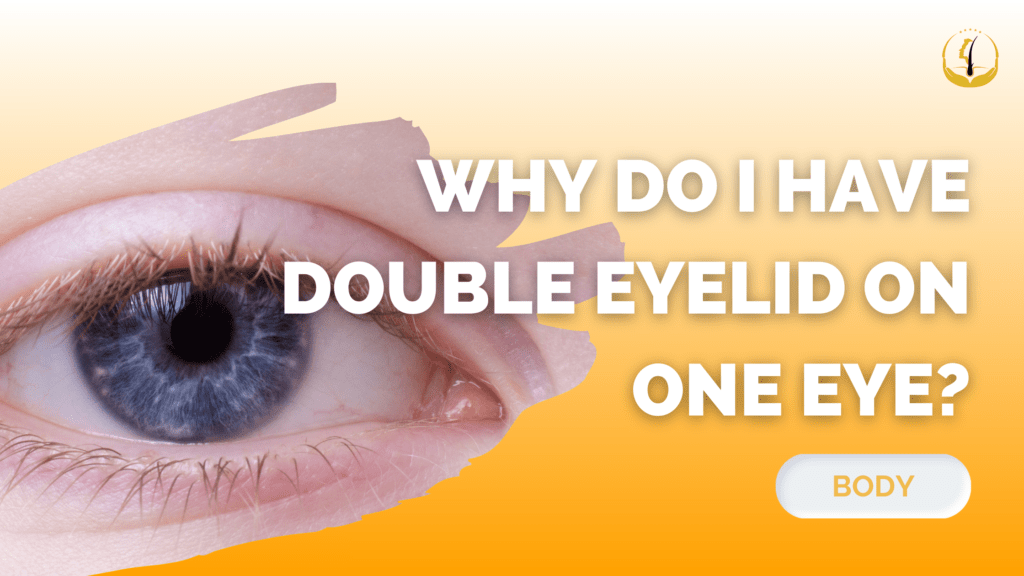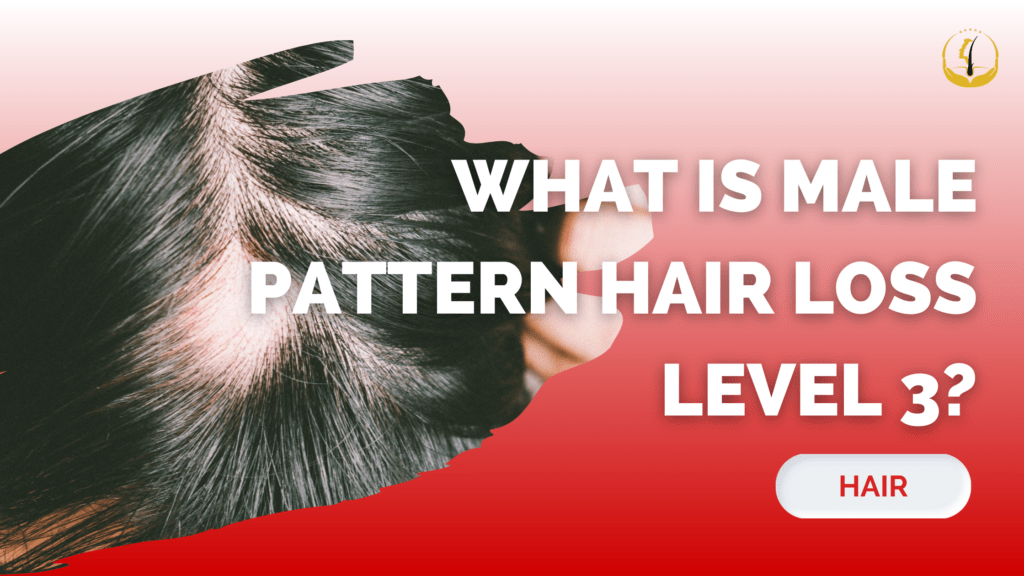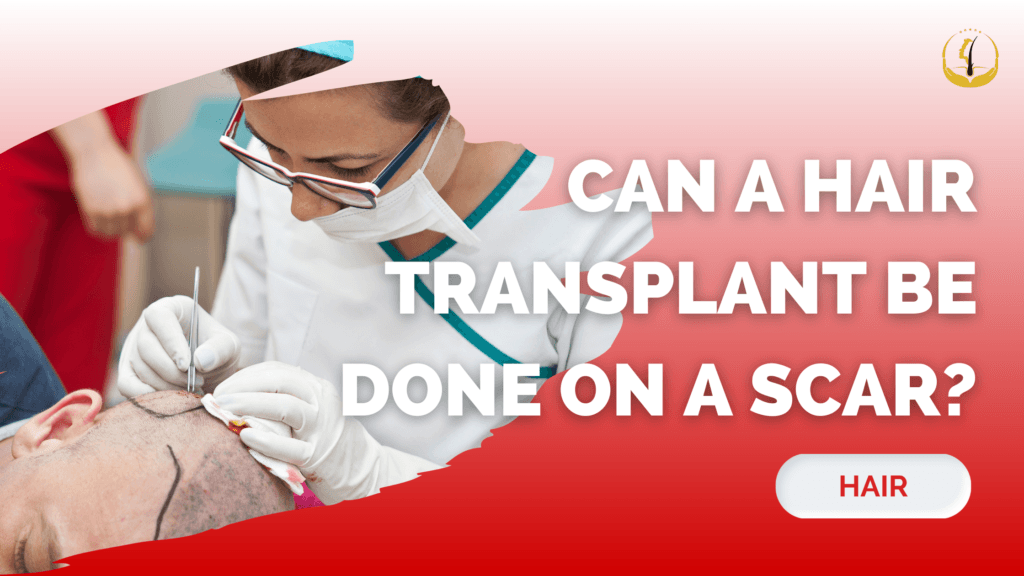Why do I Have Double Eyelid on One Eye?

The human body is a remarkable canvas of uniqueness, where every individual’s features exhibit distinct variations that contribute to their identity. One such intriguing phenomenon is the presence of a double eyelid on just one eye. While double eyelids are a common trait in many individuals, the occurrence of this feature on only one eye sparks curiosity and raises questions about the underlying reasons. Without further delay, let’s find out why do some people have double eyelid on one eye! Genetic Predisposition Genetics play a pivotal role in determining our physical characteristics, from the color of our eyes to the shape of our nose. The presence of double eyelids, which are characterized by a crease above the eyelid, is largely influenced by genetics. In some cases, the genes responsible for eyelid creasing might be more dominant on one side of the family tree, leading to the development of a double eyelid on only one eye. Asymmetrical Development During embryonic development, the human body undergoes a series of complex processes that can occasionally result in asymmetrical features. This might explain why an individual might have a double eyelid on just one eye. Factors such as unequal pressure during fetal development or variations in the migration of certain tissues can lead to dissimilarities in eyelid creasing. Muscular Contractions and Habits The formation of double eyelids is also influenced by the muscles surrounding the eyes. The levator palpebrae superioris muscle is responsible for lifting the upper eyelid. It is possible that variations in the development, strength, or tension of this muscle on one side of the face could contribute to the presence of a double eyelid on only one eye. Additionally, habitual activities like rubbing or touching one eye more frequently than the other could potentially influence the development of a crease. Injury or Trauma Physical trauma or injury to the eyelid area can also lead to the development of a double eyelid on one eye. Scar tissue formation during the healing process might result in an altered eyelid structure. This can occasionally manifest as a double eyelid on the affected eye, differentiating it from the other eye. Environmental Factors Environmental factors such as exposure to sunlight, wind, and other elements could potentially impact the skin’s elasticity and texture. These factors might contribute to the development of a double eyelid on one eye over time. Additionally, differences in skincare routines, makeup application, or even sleeping positions could also influence the formation of eyelid creases. The presence of a double eyelid on just one eye is a fascinating example of the intricate interplay between genetics, development, and individual uniqueness. While scientific explanations offer insights into the potential reasons for this phenomenon, it’s essential to recognize that each individual is a product of numerous complex factors. As science continues to uncover the mysteries of human genetics and development, we gain a deeper understanding of the remarkable diversity that makes each of us truly one-of-a-kind. So, if you find yourself sporting a double eyelid on just one eye, embrace the curiosity it sparks and the story it tells about your own distinctive journey. At Glojas, we welcome clients to reach out to us directly to schedule a free initial consultation. We offer guidance and valuable insights on how best to address your specific challenges. Let us assist you in navigating your journey with confidence and clarity.
What is Male Pattern Hair Loss Level 3?

Male Pattern Hair Loss (MPHL), also known as androgenetic alopecia, is a common condition that affects a significant portion of the male population. It is characterized by a predictable pattern of hair loss that follows a distinct progression. Let’s explore deeper into Male Pattern Hair Loss Level 3, exploring its causes, symptoms, and potential treatment options. Male Pattern Hair Loss Level 3 Male Pattern Hair Loss is categorized into several stages or levels, with Level 3 being a notable point in the progression of the condition. At this stage, individuals typically experience a more pronounced thinning of hair on the crown area, also known as the vertex. Hair loss in this region becomes more evident, leading to increased visibility of the scalp. Causes of Male Pattern Hair Loss Male Pattern Hair Loss is primarily attributed to genetic and hormonal factors. It is influenced by the interplay between androgens (male hormones) and genetics. The hormone dihydrotestosterone (DHT) is a key player in the development of MPHL. In genetically predisposed individuals, DHT attaches to hair follicles, leading to their miniaturization and eventual cessation of hair production. Symptoms of Level 3 Male Pattern Hair Loss Male Pattern Hair Loss Level 3 is characterized by the following symptoms: Crown Thinning: Thinning hair at the crown of the scalp is a hallmark of Level 3 MPHL. Hair becomes sparse, and the scalp becomes more visible, creating a circular or oval-shaped balding pattern. Hairline Maintenance: Unlike earlier stages of MPHL, the hairline at Level 3 is often relatively preserved. However, further progression of the condition may lead to a receding hairline in later stages. Hair Shedding: Increased hair shedding during daily activities such as showering or combing is common. This shedding is a result of weakened hair follicles producing thinner and finer hairs. Treatment Options for Male Pattern Hair Loss Level 3 While Male Pattern Hair Loss is a progressive condition, there are various treatment options available to manage its symptoms and slow down its progression: Medications: Two FDA-approved medications, finasteride (oral) and minoxidil (topical), are commonly used to treat MPHL. Finasteride works by reducing DHT levels, while minoxidil promotes hair growth by improving blood circulation to the hair follicles. Low-Level Laser Therapy (LLLT): LLLT involves the use of specialized devices that emit low-intensity laser light to stimulate hair follicles, promoting hair growth and increasing hair density. Hair Transplant Surgery: Hair transplant procedures involve the transplantation of healthy hair follicles from one area of the scalp (usually the back of the head) to the thinning or balding areas. This surgical option provides long-lasting and natural-looking results. Lifestyle Changes: Adopting a healthy lifestyle, including a balanced diet, regular exercise, and stress management, can contribute to overall hair health. Camouflage Techniques: Various cosmetic products, such as hair fibers and concealers, can be used to temporarily mask the appearance of thinning hair and create the illusion of fuller hair. Male Pattern Hair Loss Level 3 is a significant stage in the progression of androgenetic alopecia, characterized by pronounced thinning at the crown area. While it can be distressing, there are several treatment options available to manage the condition and promote hair growth. Consulting with GLOJAS experts is essential to determine the most suitable treatment plan based on individual needs and preferences. At Glojas, we welcome clients to reach out to us directly to schedule a free initial consultation. We offer guidance and valuable insights on how best to address your specific challenges. Let us assist you in navigating your journey with confidence and clarity.
Can a Hair Transplant Be Done on a Scar?

Modern advancements in cosmetic surgery have transformed the landscape of addressing aesthetic concerns. One intriguing development is the ability to perform hair transplants on scars. Renowned for their success in restoring hairlines, hair transplants have expanded their scope to tackle scars. Let’s delve into the world of hair transplants on scars. Hair Transplants on Scars Feasible and transformative, hair transplants on scars owe their success to evolving surgical techniques and skilled surgeons. Scars, lingering reminders of injuries or surgeries, can be emotionally challenging. Hair transplantation emerges as a solution by using the patient’s own hair follicles to cover and blend with the scar tissue, effectively concealing it and providing a more natural appearance. Techniques Used for Hair Transplants on Scars Two primary techniques are commonly employed for performing hair transplants on scars: SMART™ Follicular Unit Extraction (SMART™ FUE): Ideal for smaller scars or less invasive approaches, SMART™ FUE involves extracting individual hair follicles directly from the donor area and implanting them into the scar. SMART™ Follicular Unit Transplantation (SMART™ FUT): Particularly useful for larger scars requiring greater coverage, SMART™ FUT involves harvesting a strip of hair-bearing skin from the donor area and meticulously placing individual follicular units within the scar. Benefits of Hair Transplants on Scars Enhanced Aesthetics: Integrating hair follicles into the scar makes it less noticeable, blending seamlessly with the surrounding skin. Boosted Confidence: Concealing scars through hair transplantation often leads to a significant boost in self-confidence and self-image. Natural Results: Meticulous attention to detail ensures that transplanted hair matches existing hair, resulting in natural-looking outcomes. Minimal Downtime: Hair transplant procedures on scars typically have a relatively short recovery period, allowing patients to return to regular activities within a few days. Long-lasting Results: Transplanted hair is permanent, providing long-term concealment of the scar. The ability to perform hair transplants on scars offers new hope for addressing both hair loss and scar visibility. With advanced techniques like SMART™ FUE and SMART™ FUT, skilled surgeons can artistically transform scars into natural-looking, hair-covered areas. This procedure not only enhances aesthetics but also instills renewed confidence in individuals burdened by their scars. If you’re contemplating a hair transplant on a scar, consulting with a qualified and experienced surgeon is crucial.They are able to evaluate your particular circumstance and suggest the best course of action. The journey to reclaiming a more confident and aesthetically pleasing appearance through hair transplantation on scars is indeed a promising one. FAQs (Frequently Asked Questions) Q1: Can a hair transplant effectively cover a scar? A: Yes, hair transplants on scars use the patient’s own hair follicles to effectively cover and blend with scar tissue. Q2: What are the primary techniques for hair transplants on scars? A: SMART™ Follicular Unit Extraction (SMART™ FUE) and SMART™ Follicular Unit Transplantation (SMART™ FUT) are commonly used techniques. Q3: Are hair transplants on scars suitable for smaller scars? A: Yes, SMART™ FUE is ideal for smaller scars or cases where a less invasive approach is desired. Q4: Which technique is suitable for larger scars requiring greater coverage? A: SMART™ FUT is particularly useful for larger scars that require greater coverage. Q5: How soon can one return to regular activities after a hair transplant on a scar? A: Hair transplant procedures on scars typically have a relatively short recovery period, allowing patients to return to regular activities within a few days. Q6: Is the transplanted hair permanent? A: Yes, transplanted hair is permanent and will continue to grow naturally. Q7: How does hair transplantation on scars enhance aesthetics? A: By integrating hair follicles into the scar, it becomes less noticeable and blends seamlessly with the surrounding skin. Q8: Can hair transplantation on scars boost confidence? A: Yes, concealing scars through hair transplantation often leads to a significant boost in self-confidence and self-image. Q9: What is the importance of consulting with a qualified surgeon for a hair transplant on a scar? A: Consulting with a qualified surgeon is crucial to assess your unique situation and recommend the most suitable approach. Q10: What are the long-term results of a hair transplant on a scar? A: The transplanted hair is permanent, ensuring long-term concealment of the scar.






